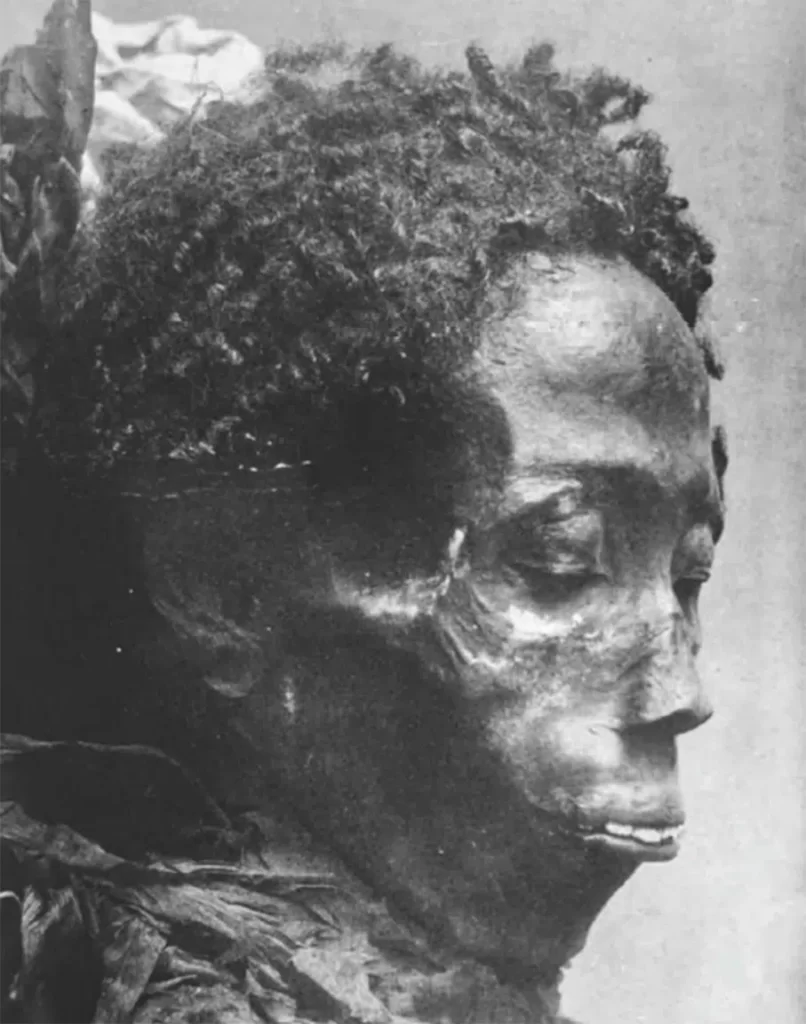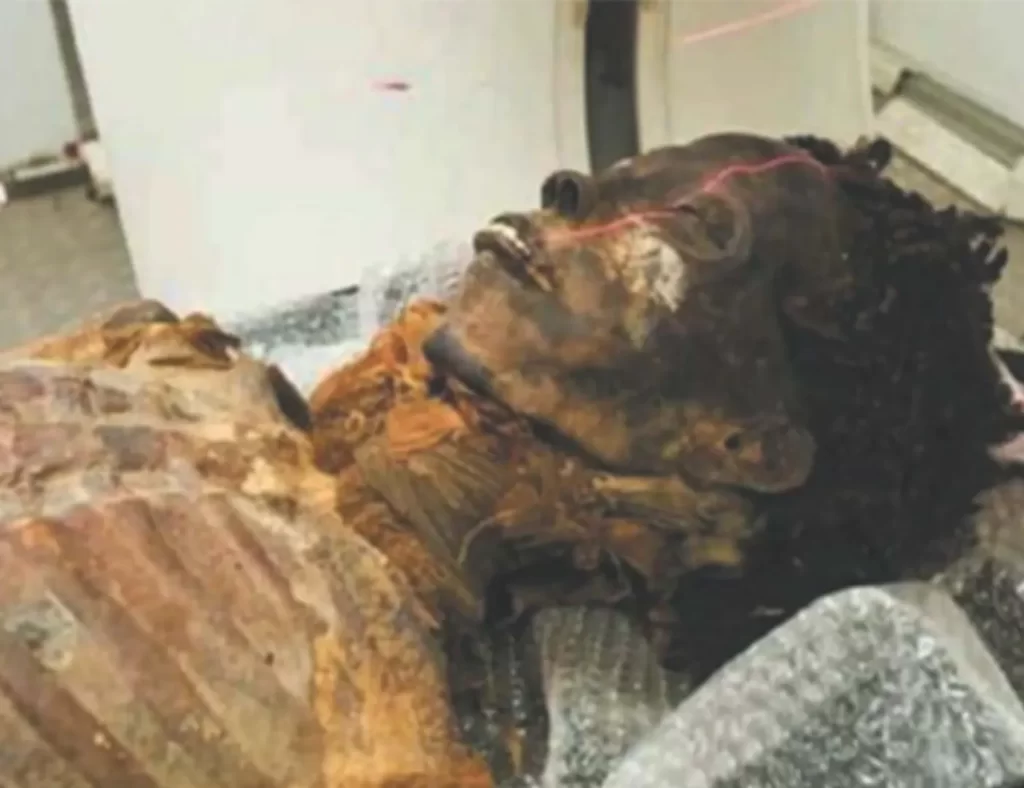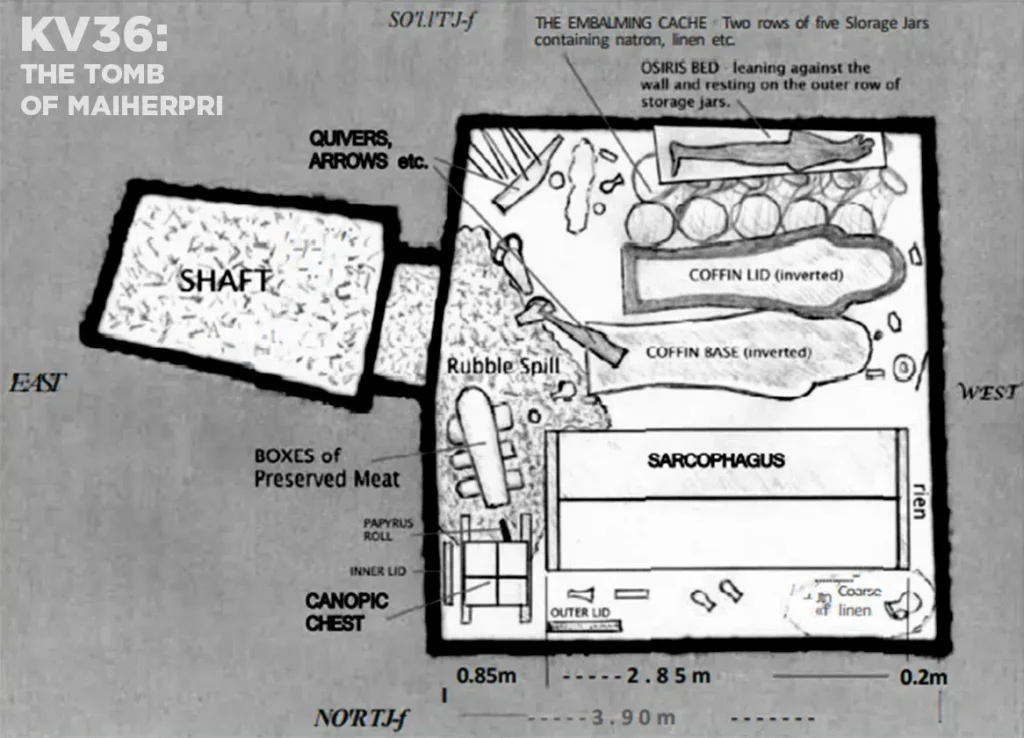The Lost Tomb of Maiherpri

The Lost Tomb of Maiherpri, also known as KV36, was discovered in 1907 by Egyptologist James E. Quibell during excavations at the Valley of the Kings. What made this discovery so unique was that it was found to contain an intact sarcophagus with the mummified remains of Maiherpri, high priest of Amun during Egypt’s 20th dynasty in 1450 BC. While many tombs from ancient Egypt have been discovered over the years, very few are preserved in such good condition, especially after thousands of years without any outside interference.
After thousands of years, a tomb that archaeologists had assumed was empty and abandoned turned out to contain the preserved remains of Maiherpri, who archaeologists believe was in charge of the ancient city of Nubt during the Middle Kingdom era of Ancient Egypt. This discovery has stunned experts from around the world, who have been unable to find any evidence that this man ever existed. According to their records, he would have lived approximately 4,000 years ago during what many consider to be one of the most significant periods in human history.
Loret spent most of his time excavating during his brief tenure as Director of the Egyptian Antiquities Service (August 1897 – late 1899). It was his work in the Valley of the Kings that provided him with the greatest hit, where he discovered six new tombs in a little over a year, including those of the Eighteenth Dynasty pharaoh (KV34); Amenhotep II (KV35, which included the second cache of royal mummies); and Thutmose I (KV38) – proving that the main valley was not just a cemetery of Nineteenth and Twentieth Dynastic ‘Ramesside’ pharaohs.
Who was Maiherpri?
The lost tomb of Maiherpri was discovered after thousands of years. The tomb was found in the Saqqara Necropolis in Egypt. The tomb is believed to date back to the Old Kingdom period. The tomb contains the remains of an Egyptian nobleman. The tomb was found by a team of archaeologists from the University of Cairo. The tomb is one of the most well-preserved tombs from the Old Kingdom period. The team of archaeologists believe that the tomb has not been looted because the walls were built with limestone and are difficult to break through. The walls also contain reliefs depicting the owner’s family. The name of the owner is still unknown, but it is assumed that he might have been related to high officials from the Fifth Dynasty or Sixth Dynasty.
Tomb Discovery

To the south of the tomb of Amenhotep II (KV35), and near Kings’ Valley’s main axis, a shaft tomb (KV36) was found. A few months later, Loret descended the vertical shaft and entered the sole chamber at the bottom of the shaft, becoming the first to discover a largely intact burial in the Valley of the Kings – Maiherpri’s. In the chamber, the whole floor area was covered with artefacts. Many of them were obviously disturbed, but others remained intact.
Nonetheless, Loret (who was a devoted excavator and cataloguer) eventually resigned from the Directorship and left for France to pursue a career in lecturing, leaving the tombs of both Maiherpri and Thutmose I unpublished. It wasn’t until recently that the location of objects within Maiherpri’s burial chamber could be reasonably ascertained, as some passages in the museum catalogue compiled by Georges Daressy made specific references to their location, and as general points about their placement were described by the German explorer and botanist Georg Schweinfurth, who had visited the tomb during the clearance of its objects. All he said was that there was a lidless coffin upside down in the middle of the chamber, but he never really clarified the location of the various items around the large box sarcophagus.
It appears a gaming board and related pieces were discovered “between the sarcophagus and the wall in the chamber”; also found were boxes of provisions and garlands behind the sarcophagus; “On the wall opposite the sarcophagus, thirteen large storage jars containing waste embalming materials were found.”. Some clues gave the imagination room to run wild: “… strange weapons and art pieces have been discovered in the burial chamber…”.
Documenting the Tomb
Egyptologists had previously found this issue until 2004, when Patrizia Piacentini of the University of Milan discovered Loret’s notebooks in the Archives of the Institut de France – at the Academic des Inscriptions et Belles Lettres, Paris. These sketches were published in La Vtzlle Dei Re Riscoperta (2004). Some of the most important discoveries in this category are the ones by Loret, where he was painstakingly tracking everything that was in the tomb and meticulously noting all the objects as they were revealed. This diary occupies pages 13-30 of his Carnet (notebook) IL, where he starts by describing the layout of objects in the tomb as they were seen on March 30, 1899, and then made notes as objects were removed and what they revealed behind them.
In addition, Loret mapped the location of the inner lid, which was leaning against the east wall. Items 49 to 57 were the previously-mentioned boxes of mummified meat. Likewise, we examined the southern wall of the tomb chamber to the left of the upturned coffin lid. Alongside the wall, occupying approximately half of its length, were two rows of five large storage jars that Loret indicated on five of his sketch plans. It is likely that the robbers, appreciating that the ten jars contained only swabs and mummification materials remaining from Maiherpri’s embalming cache, left them seal-stopped and undisturbed. On the five outer jars rested Osiris’ bed, tossed against the wall.
Mapping the Tomb

During April I ” 1899, it was possible to take measurements and draw a plan and section of KV36, according to the Theban Mapping Project results, this appears to be the point at which Loret noted the size of the large outer sarcophagus, as well as the distance between the near and right-hand walls of the sarcophagus. Taking the length of the sarcophagus and the distance from the east wall, 2*85 + 0*85 = 3*68m, and subtracting it from the length of the chamber, 3*90m, leaves just 0*20m (approximately 8 inches), explaining why Loret wrote “rien” in the space at the far (west) end.
Check it out: Gods of the Olympics – The 12 Olympian Gods
